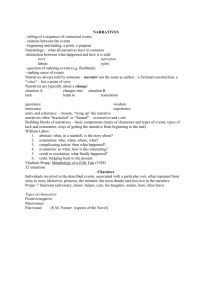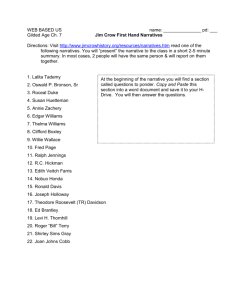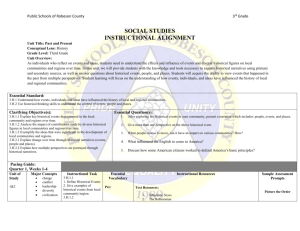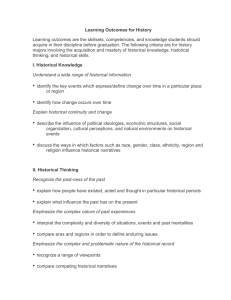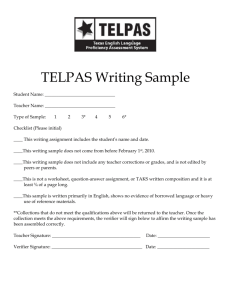guidelines for critical cultural narratives
advertisement
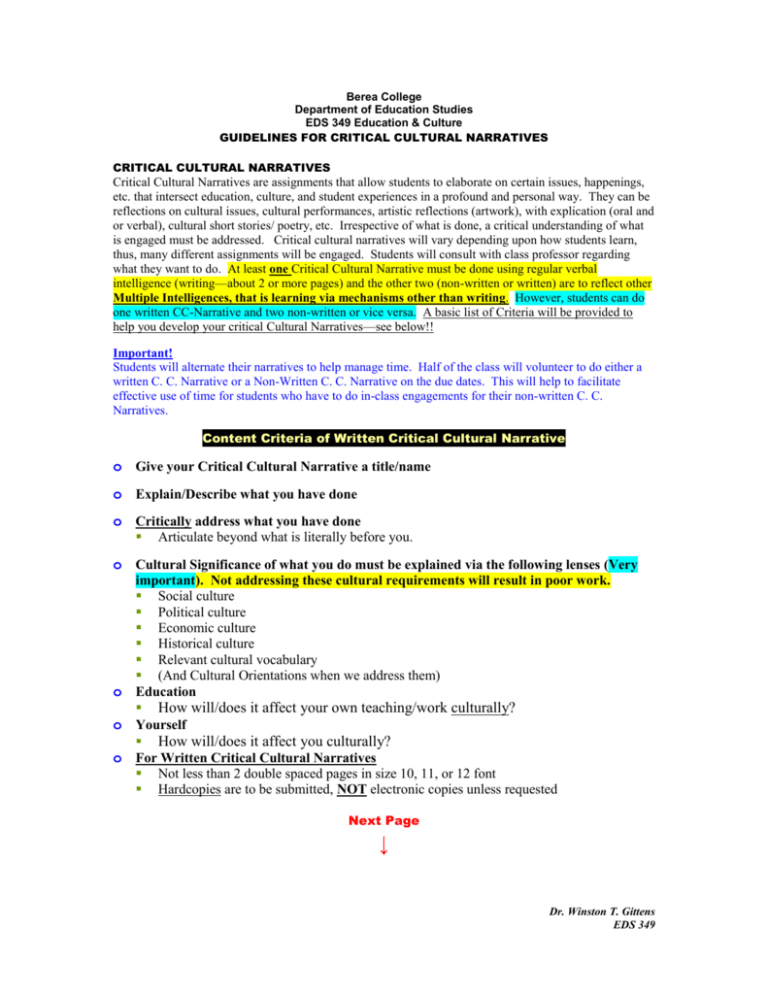
Berea College Department of Education Studies EDS 349 Education & Culture GUIDELINES FOR CRITICAL CULTURAL NARRATIVES CRITICAL CULTURAL NARRATIVES Critical Cultural Narratives are assignments that allow students to elaborate on certain issues, happenings, etc. that intersect education, culture, and student experiences in a profound and personal way. They can be reflections on cultural issues, cultural performances, artistic reflections (artwork), with explication (oral and or verbal), cultural short stories/ poetry, etc. Irrespective of what is done, a critical understanding of what is engaged must be addressed. Critical cultural narratives will vary depending upon how students learn, thus, many different assignments will be engaged. Students will consult with class professor regarding what they want to do. At least one Critical Cultural Narrative must be done using regular verbal intelligence (writing—about 2 or more pages) and the other two (non-written or written) are to reflect other Multiple Intelligences, that is learning via mechanisms other than writing. However, students can do one written CC-Narrative and two non-written or vice versa. A basic list of Criteria will be provided to help you develop your critical Cultural Narratives—see below!! Important! Students will alternate their narratives to help manage time. Half of the class will volunteer to do either a written C. C. Narrative or a Non-Written C. C. Narrative on the due dates. This will help to facilitate effective use of time for students who have to do in-class engagements for their non-written C. C. Narratives. Content Criteria of Written Critical Cultural Narrative o Give your Critical Cultural Narrative a title/name o Explain/Describe what you have done o Critically address what you have done Articulate beyond what is literally before you. o Cultural Significance of what you do must be explained via the following lenses (Very important). Not addressing these cultural requirements will result in poor work. Social culture Political culture Economic culture Historical culture Relevant cultural vocabulary (And Cultural Orientations when we address them) o Education How will/does it affect your own teaching/work culturally? o Yourself How will/does it affect you culturally? o For Written Critical Cultural Narratives Not less than 2 double spaced pages in size 10, 11, or 12 font Hardcopies are to be submitted, NOT electronic copies unless requested Next Page ↓ Dr. Winston T. Gittens EDS 349 Content Criteria For Non-Written Critical Cultural Narratives Verbally explain what you prepared to the class Give your non-written CC Narrative a title/theme, etc. Articulate beyond what is literally apparent to you (use critical thinking skills). Use technology to facilitate what you will be doing o Cultural Significance of what you do must be explained via the following lenses (Very important) Social culture Political culture Economic culture Historical culture Relevant cultural vocabulary (And Cultural Orientations when we address them) o Education How will/does it affect your own teaching/work culturally? o Yourself How will/does it affect you culturally? Explain verbally the Multiple Intelligences used You will also be assessed by your peers on an itemized checklist that will cover the content criteria items. PS: As we go through the semester, in addition to what is mentioned in the guidelines above, you can use additional course concepts that will be discussed later in the course. For example, when we discuss cultural orientations, you can use such concepts in your narratives. Dr. Winston T. Gittens EDS 349

